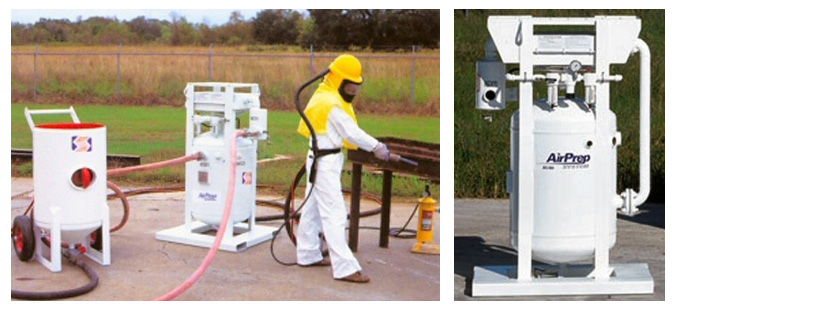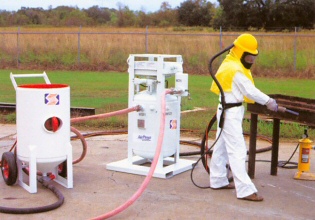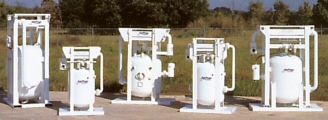-
OTHER EQUIPMENT
-
Dry Air
-
Dry Air Moisture Control

Moisture in your compressed air is a big problem! It makes the abrasive in your blast machine damp or wet, causing the abrasive flow from the machine to be uneven and reduce or even completely block media flow. The operator may find himself opening the media valve to get more grit, thus wasting the grit. Moist abrasive media can adhere to the internal components of the blaster, and when it dries, it can be extremely difficult to remove! Water and oil vapors can cause “flash rusting” on the surface of steel products and oil vapors deposited on surfaces will cause paint and other coatings to adhere poorly or create early failures such as chipping and separating.
An uneven or blocked abrasive flow will require you to use more abrasive, make blasting jobs take longer and damage your blast equipment!

Moisture costs you money!
For those of us in high humidity areas, the aggravations created by moisture are compounded. Relative humidity is the percentage of water vapor in the atmosphere in relation to the amount required to completely saturate it at the same temperature. As air gets hotter, it expands and can hold more moisture. When air at 100% humidity is cooled, by nature or man-made mechanical devices, the water vapor changes to small water droplets.
In order to remove moisture from compressed air for blast cleaning, it has to be cooled by some means so drops of water can form and be removed.

Let’s say the temperature is 75° F and the relative humidity is 75%. As air is drawn into the air compressor, that 75% moisture is in vapor form. As air is compressed, it picks up heat from the compression action and from metal in the pistons or rotary screws. It is not uncommon for the temperature to be more than 200° F when compressed to 120 PSI. Using the temperature and relative humidity above, air compressed to 120 PSI at the rate of 200 CFM will contain about 2 gallons of water vapor each hour! The way to remove this water vapor is to cool it to its dew point (the temperature in which water vapor condenses into water droplets.)
This is usually done with an after cooler. An air cooled after cooler will lower the temperature to within 20-25° F of the ambient air temperature. At this temperature (about 135° F) an air cooled after cooler will remove about 1.3 Gallons of that 2 gallons per hour in the example above.
To further eliminate moisture, use desiccant dryers in conjunction with an after cooler.
Click here for more information on Schmidt® aftercoolers and air dryers…..
Norton Sandblasting Equipment is now JH Norton Company, Inc.
Dedicated to meeting your blasting and surface preparation needs with quality equipment, parts and supplies since 1973


